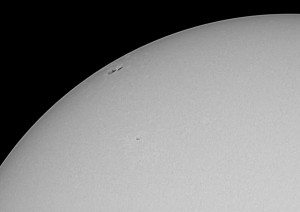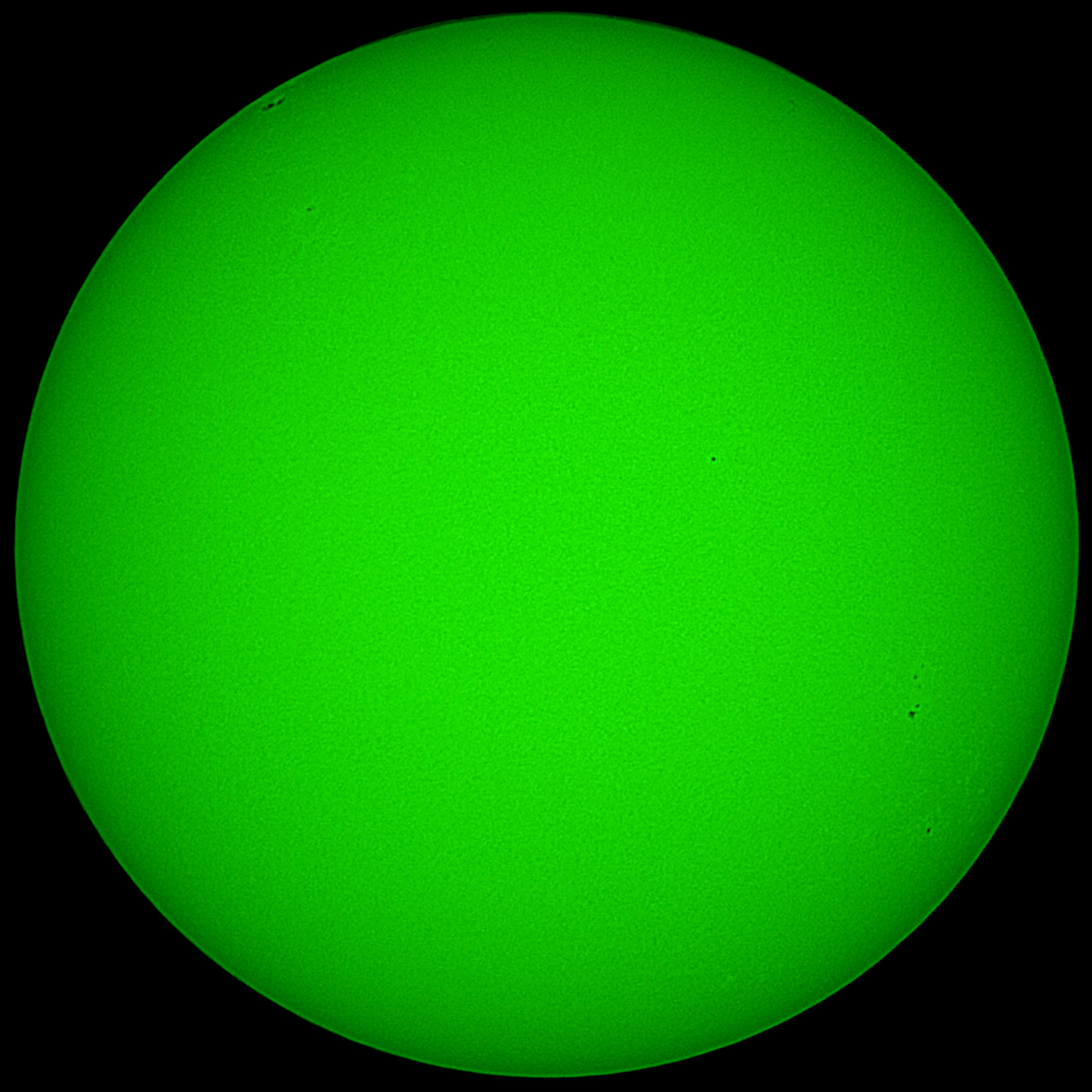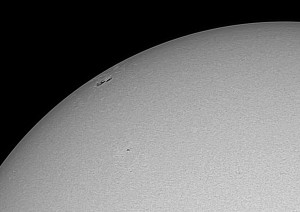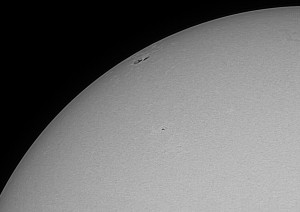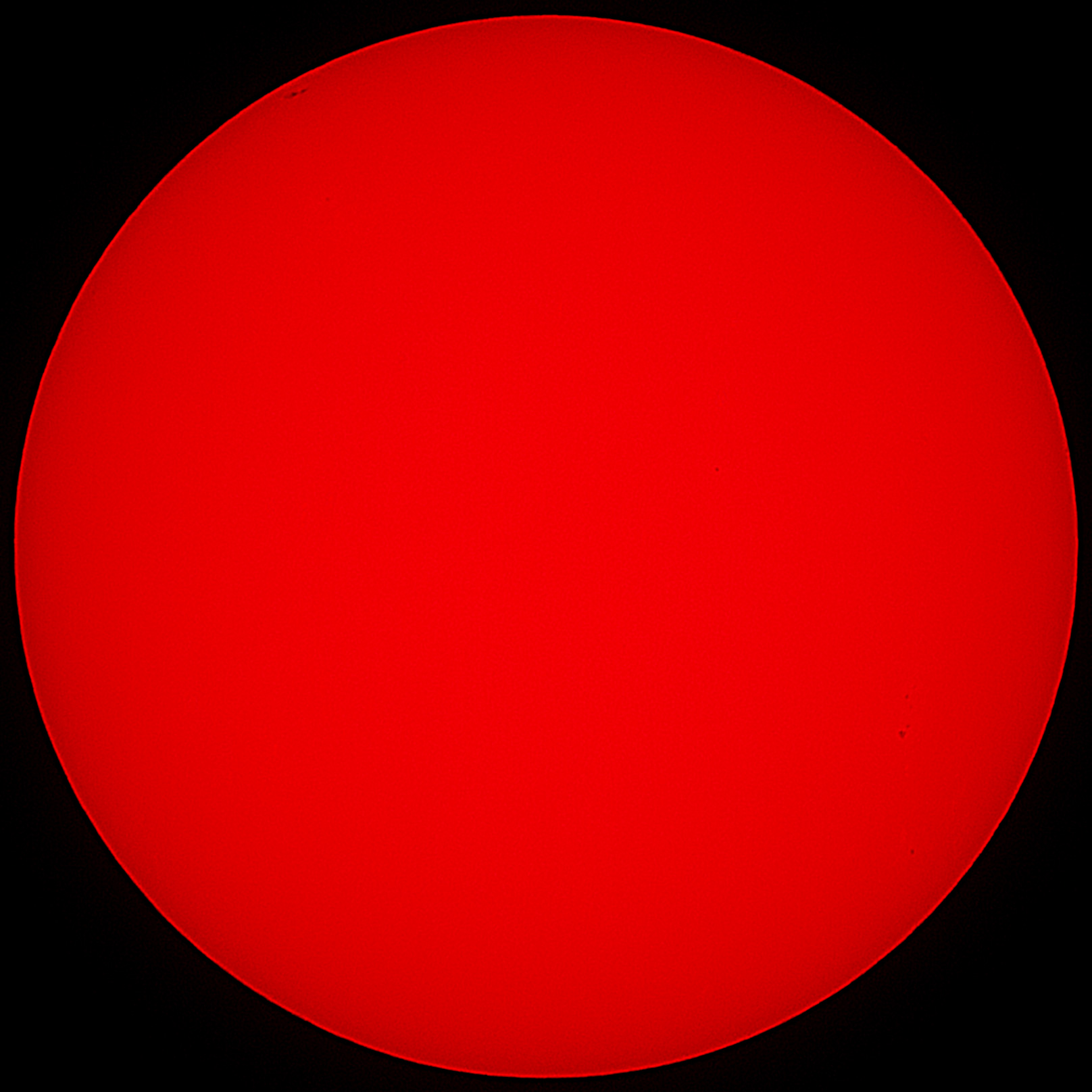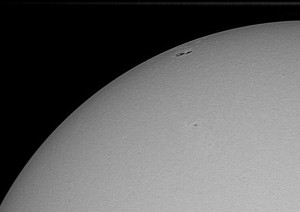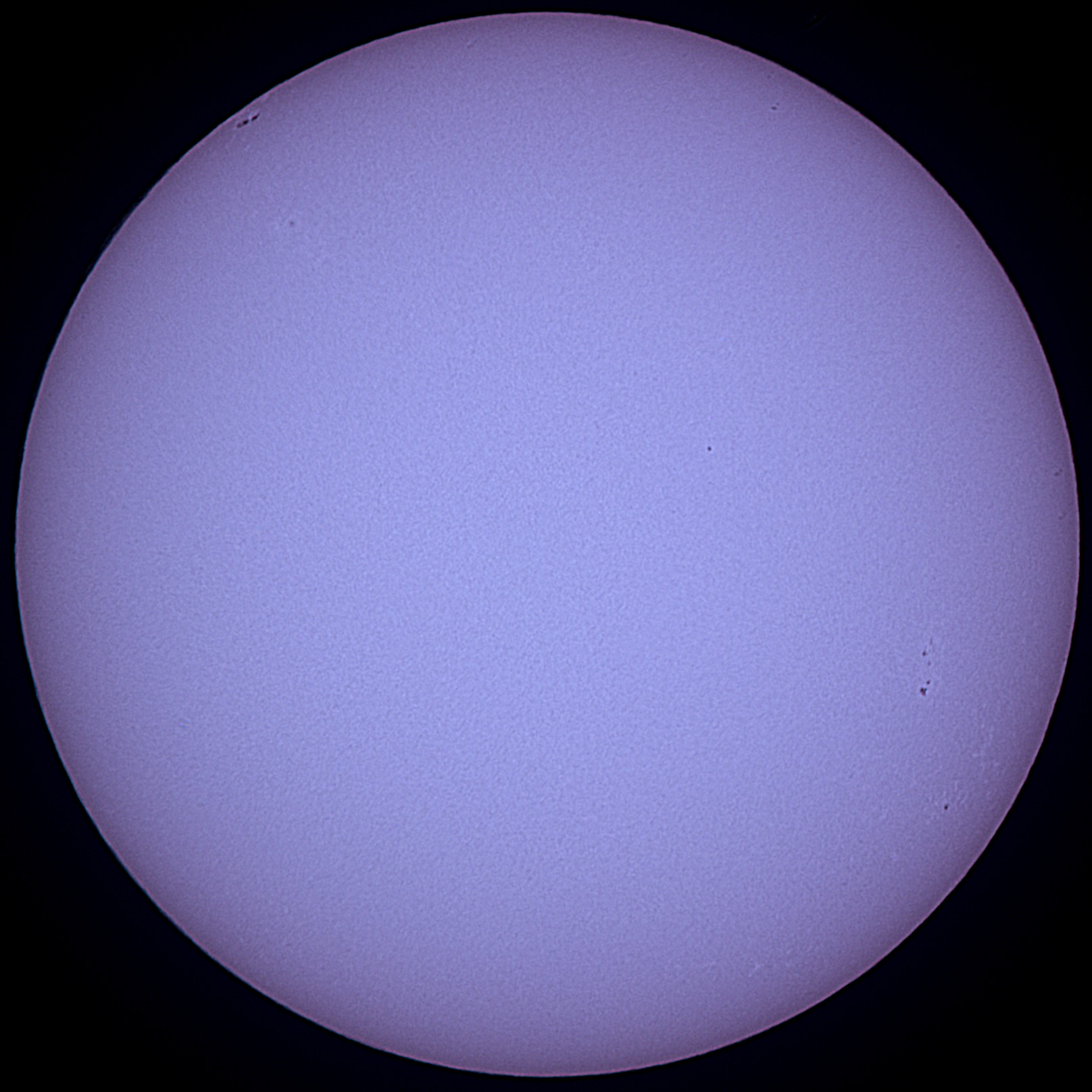One of the most inexpensive accessories you can get for your telescope is the Baader AstroSolar safety film which you can use to safely observe and photograph the sun. Baader also has the 540nm-pass “Solar Continuum” filter to improve the definition of some solar features, so I thought I’d run a little experiment to see exactly what this filter (which actually costs quite some more than the AstroSolar film) can do for me and also try out some other filters to see whether I can get better results than using the AstroSolar film by itself. Note that the AstroSolar film covering the front aperture of your scope in full is mandatory – a filter alone at the eyepiece side of the telescope is not enough to prevent instant blindness or the destruction of your imaging sensor.
Setup
I used my Skywatcher Evostar 80ED with a full-aperture Baader AstroSolar visual film and a 2x barlow with a full-spectrum Canon 600D. Narrow-band filters like the Solar Continuum would work better with the AstroSolar photo film (allowing shorter exposures), but that seems to be out of stock right now in the UK at least, so if I obtain it in the future I might update the article. In any case, for each filter tested below, I shot a few full frames of the solar disk, of which I stacked 3-4 to reduce noise, and also a short video in 3x Digital Zoom video mode stacking about 250 out of 1000 frames after converting it to grayscale and having the same wavelet sharpening applied to all cases.
UV/IR Filter (Optolong)
Since I was using a full-spectrum modified DSLR, the UV/IR filter is the “no additional filter” equivalent case. So this is what the AstroSolar film can do by itself at the visual part of the spectrum:
So this is what I want to see if I can improve on. The grayscale is to make the comparison between filters easier, while for the full disk I keep the original color. Note that we can always make the sun yellow in post-processing, so we don’t really care about what color we capture in. For example the above image can become:
Baader Solar Continuum Filter
This narrow-band (540nm) filter becomes a bit dark with the regular AstroSolar visual filter, but let’s see what it can do:
While the full-disk photos are not impressive, this is probably due to the fact that combined with the AstroSolar visual I need either greater exposures or higher ISO. However, stacking a few hundred frames of the solar activity detail shows better defined sunspots and the appearance of granulation. Faculae (the bright regions/spots) are the only thing that is not more pronounced.
O-III Filter (Zhumell)
A Zhumell-branded classic blue/green nebula filter at 500nm. Combined with a UV/IR of course, since I am using a full-spectrum camera.
Interestingly, the O-III filter is also an improvement over our UV/IR reference when it comes to the video stack detail and it is similar to the Solar Continuum filter, but less pronounced. I.e. you do start to get a little granulation and a bit more defined spots, but not at the level of the Solar Continuum. So it is not a bad idea to try your O-III filter if you already have it.
12nm H-alpha filter (Optolong)
Some people might think, hey, what do I need those super-expensive H-alpha solar telescopes when I already have an Hα nebula filter? Well, the issue is that even a relatively narrow Hα filter like the 12nm Optolong-branded one I try here, is still over 200 times wider than the Hα telescopes. So don’t get your hopes up:
Well, I won’t see much improvement over the UV/IR shot. The wavelet sharpening at the same level came a bit stronger for the Hα image for some reason, so what I see looks like some grain noise and not granulation like the green/blue filters. So we don’t get the features of the Hα telescopes and neither do we get the benefits of the blue/green filters.
Green #58 filter
I thought I’d try the inexpensive wratten #58 green filter to see if we can get some of the benefits that the narrow-band Continuum and O-III get. The #58 filter transmits wavelengths around 500-600nm, so the 540nm line of the Solar Continuum filter is included, along with other, probably not as desirable wavelengths.
I can sort of see the effect we saw in the narrowband blue/green filters, but more abated. It is not even near the levels of the O-III. It still seems a bit of an improvement over nothing though, so try it on if you don’t have something better.
CLS-CCD broadband filter (Optolong)
This is normally a filter that you use when shooting nebulae in light-polluted skies. But as it is very common and many people might have one, I thought I’d try out my Optolong-branded one to see if it is any better than just the UV/IR filter.
Well, I’d say the CLS-CCD detail image is actually a bit better than the #58 filter, even though this filter blocks the 540nm line of the Solar Continuum filter. Unexpectedly, it is not such a bad idea to shoot the sun with a CLS filter.
630nm IR filter
Well, just for fun I did try my 630nm IR filter that helps with planetary photography. I won’t even post a result here, as it washes out all detail, so it is not a good idea.
Conclusions
Not surprisingly, the filter designed for bringing out more detail in white-light solar viewing/imaging, the Baader Solar Continuum filter does seem to be the best of the filters I tried. However, as it doesn’t come cheap, I did expect it to be a bit better, so I am not sure if most people would consider it worth the price. I do have a Baader photofilm being delivered to me from overseas, so I will try it with that as well and update if the result is different. If you have an O-III filter lying around you could get some of the benefits that the Solar Continuum would bring, although I have to say that observing in green or blue is not that pleasant, hence you’d like to stick to imaging with those. Even a CLS filter did bring some limited improvement and without sacrificing a lot of light in the process.
Lastly, the above test was with an apochromatic refractor. If you have an achromatic refractor then your scope is at a disadvantage when viewing the full spectrum (i.e. unfiltered or just UV/IR), as it cannot focus all colors at exactly the same plane. So any narrowband filter would get rid of this problem giving you results (with such a filter) more similar to an apochromatic refractor.
Update: I did get that Baader Photo film and while it helps a lot with the Solar Continuum filter, it makes a huge difference even without an additional filter. See my post here about it.


